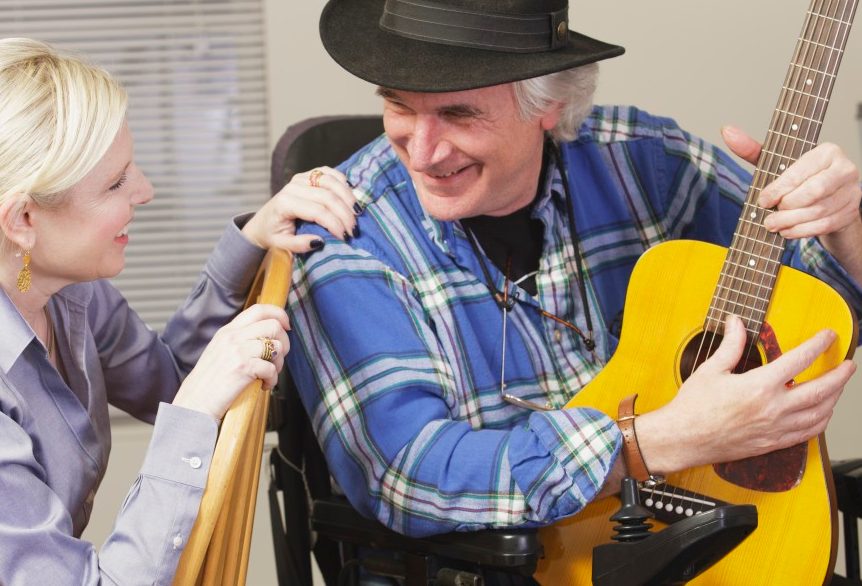Life with Multiple Sclerosis

The earlier your multiple sclerosis is diagnosed, the better your chance of slowing the progression of this insidious disease. Here’s what you should know.
In her 30s, Adriane Emerson, lived like most everyone else. She got up in the morning, prepared for her day, commuted to work and back, tied up loose ends, saw to her kids’ needs, and, maybe, found some time for herself before going to sleep.
Unlike most everyone else, she is battling multiple scerlosis (MS), diagnosed when she was 30.
After her left leg started tingling and then became numb, Emerson learned she had relapse-remitting MS, the most common of four types. It is the initial diagnosis of about 85 percent of people with MS.
More than likely, she learned, her condition would progress over time, but no one knew how quickly.
YOU MIGHT ALSO LIKE: How to Prevent Multiple Sclerosis Symptoms
MS attacks the brain and spinal cord. There is no single test for the condition. It often progresses for years without a formal diagnosis, probably because many of its most common symptoms are found in so many other conditions.
Symptoms of multiple sclerosis include:
- Fatigue
- Numbness or tingling
- Walking difficulties
- Spasticity
Nearly 1 million are living with MS in the United States, according to a study funded by the National MS Society.
Emerson injected herself in the thigh once a week with interferon beta-1a (Avonex). The drug has been shown in clinical trials to slow the progression of the disease, and thus cuts her risk of further disability. “That’s the worst part, the injections,” she said. She knew that she could “be in a wheelchair someday.”
She took vitamin D regularly. Having low levels of vitamin D can make MS worse, and a vitamin D deficiency may even contribute to developing the illness, her neurologist, Geoffrey Eubank, MD, medical director of the Mid Ohio MS Center at OhioHealth Neurological Physicians, had told her. Our bodies make vitamin D from sunlight. Epidemiologists have noted that MS, inflammatory bowel disease, and type 2 diabetes (yes, it may be an autoimmune illness) are more common in northern latitudes where circulating vitamin D levels are lower because of long winter months without sunlight. Do supplements help? One study concluded that people who took both vitamin D and omega-3 (fish oil) supplements for five years had a 30 percent lower risk of autoimmune disease. The benefits were consistent across different kinds of autoimmune disease, including multiple sclerosis, and increased with time. It’s unclear how much supplements help if you have MS and normal levels of vitamin D; supplements do pose some risks of side effects. A dose of 10,400 IU has been tolerable and safe in MS patients, some research shows.
Emerson also loaded up on fruits and vegetables, which also may help slow the disease. Fruits and vegetables contain antioxidants, compounds that prevent cellular breakdown, a key process in the worsening of MS. She exercised regularly, again because it “certainly can be beneficial in managing certain symptoms” and may have “protective effects” overall, her doctor told her.
Emerson vigilantly watched for new symptoms and avoided overtaxing herself, completing tasks in chunks, then taking naps. Rest helped her avoid fatigue and stress, which can affect her central nervous system and might aggravate her disease.
“I consider myself lucky,” she said.
At the other end of the MS spectrum was Madalyne Solomon, 64, also diagnosed at age 30. She had the rarest form, progressive-relapsing MS, which steadily progresses with little or no remission of symptoms. Ten to 15 percent of people with MS are diagnosed with this type, often later in life. Her fight was an all-out war. She was largely incapacitated and needed around-the-clock care. The disease even crippled the muscles she needed to speak clearly.
Her husband, Michael, did the talking for her.
Like Emerson, Solomon noticed some minor symptoms that soon led to her diagnosis. Friends advised Michael to “end the relationship” before they married because the couple had been together for only a month. They told him he didn’t know “what (he) would be saddled with.”
“It was a life-changing moment for me,” he said. “Do I decide to continue with my crazy, selfish ways, or do I do what my heart tells me,” he recalled thinking. “My heart told me I was in for a ride. But it also told me this was an opportunity I could not walk away from. Here was a person I could possibly help and comfort, and just to deny that didn’t feel right to me.”
Decades later, they remained in the same Chicago apartment, sharing it with a live-in caretaker. Madalyne first lost the use of her legs, then the disease spread to her arms and finally to the parts of her nervous system that control breathing and speaking.
Michael used the challenge to grow spiritually and understand the true meaning of caring. Being a family member and a caregiver is an incredible burden that can wear you down — even with live-in help. Michael rented a small apartment, a getaway place where he spent two days a week, a reminder that, to help take care of her, he needed to take care of himself.
Madalyne still had the sweet, positive mental attitude that attracted Michael in the first place, he said, and the couple remains in love.
If you have symptoms, see a neurologist. While there is no cure, MS symptoms can be treated. The earlier the diagnosis, the better the chance of slowing its progression.
YOU MIGHT ALSO LIKE: Smoking Accelerates Multiple Sclerosis Symptoms
Updated:
February 28, 2022
Reviewed By:
Janet O’Dell, RN